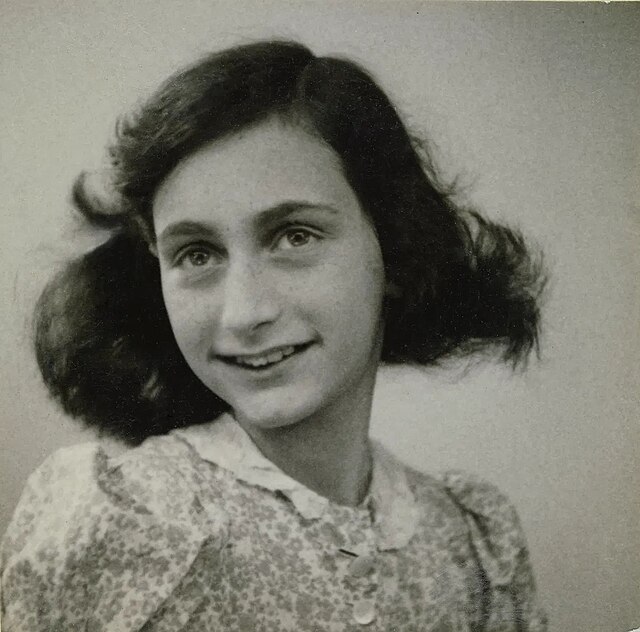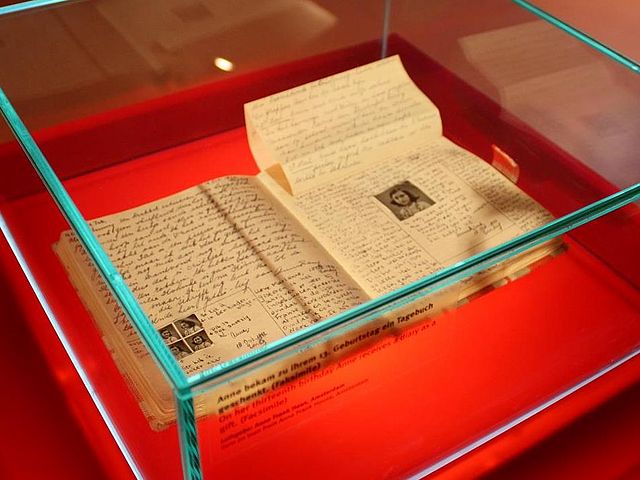Annelies Marie Frank was a German-born Jewish girl who kept a diary in which she documented life in hiding under Nazi persecution during the German occupation of the Netherlands. She is a celebrated diarist who described everyday life from her family hiding place in an Amsterdam attic. One of the most-discussed Jewish victims of the Holocaust, she gained fame posthumously with the 1947 publication of The Diary of a Young Girl, in which she documents her life in hiding from 1942 to 1944 — it is one of the world's best-known books and has been the basis for several plays and films.
Frank in May 1942, two months before she and her family went into hiding
Anne Frank at the 6th Montessori School, 1940
Photographs of Anne Frank, 1939
1929: Anne Frank's birthplace, the Hospital Maingau of the Red Cross, in 1929 still known as Vaterländisches Krankenhaus (the hospital of the "Patriotic Women's Association") in Frankfurt-Nordend
A diary is a written or audiovisual memorabilic record, with discrete entries arranged by date reporting on what has happened over the course of a day or other period. Diaries have traditionally been handwritten but are now also often digital. A personal diary may include a person's experiences, thoughts, and/or feelings, excluding comments on current events outside the writer's direct experience. Someone who keeps a diary is known as a diarist. Diaries undertaken for institutional purposes play a role in many aspects of human civilization, including government records, business ledgers, and military records. In British English, the word may also denote a preprinted journal format.
A facsimile of the original diary of Anne Frank on display in Berlin
Samuel Pepys
Faustina Kowalska







